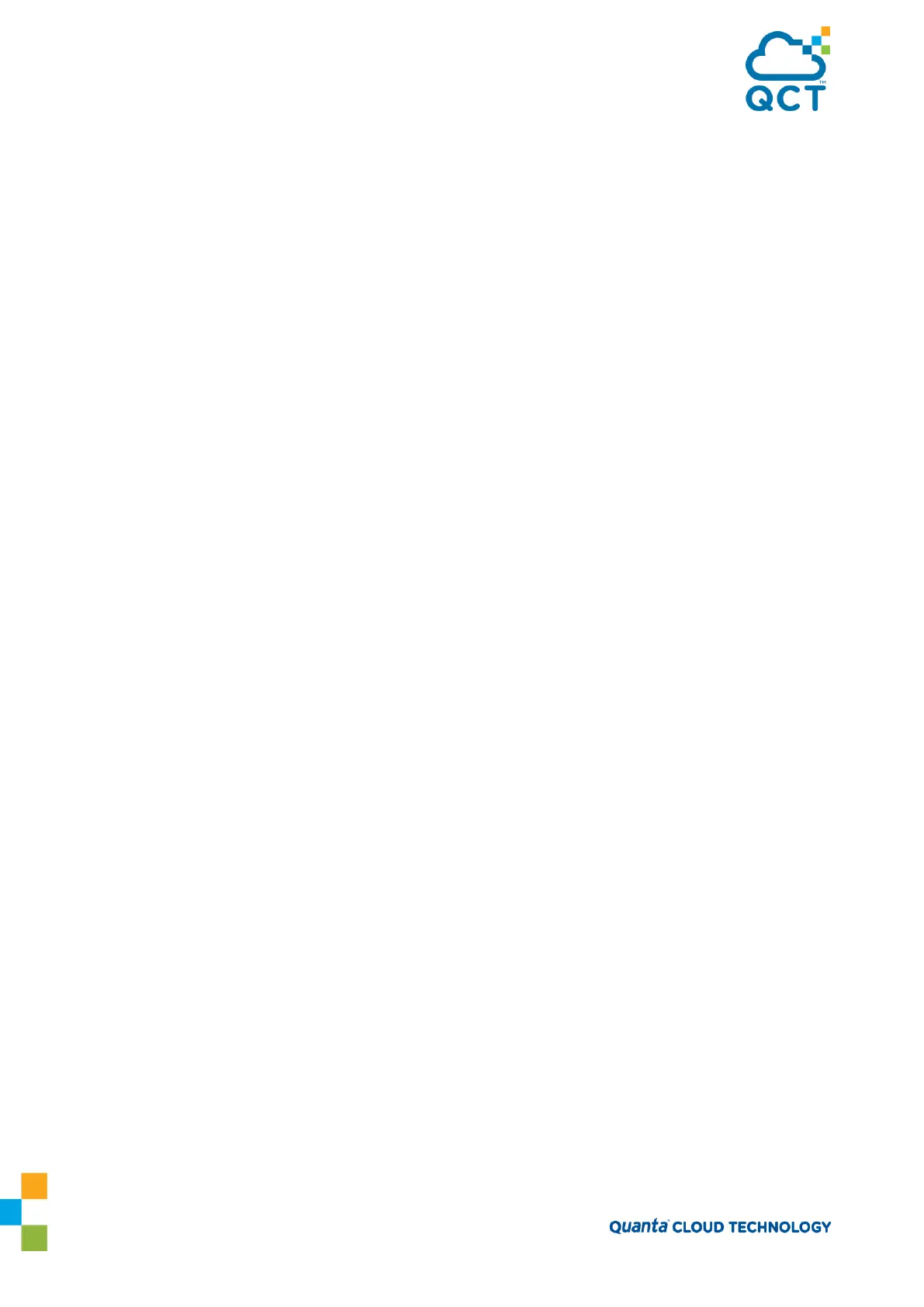238
(QCT) (Interface 0/1)#lldp receive
4. Enable the port as the configuration source. This port is connected to a trusted FCF. Configuration
received over this port is propagated to the other auto-configuration ports.
(QCT) (Interface 0/1)#lldp dcbx port-role configuration-source
(QCT) (Interface 0/1)#exit
5. Enter Interface Configuration mode for port
2.
(QCT) (Config)#interface 0/2
6. Enable the LLDP transmit and receive capability on the port.
(QCT) (Interface 0/2)#lldp transmit
(QCT) (Interface 0/2)#lldp receive
7.
Configure
the LLDP port role as
auto-down,
which means the port
advertises
a
configuration
but is not
willing to accept one from the link partner. However, the port will accept a
configuration
propagated internally
by the configuration source (port 0/1).
(QCT) (Interface 0/2)#lldp dcbx port-role auto-down
(QCT) (Interface 0/2)#exit
9.4. CoS Queuing
In a typical switch or router, each physical port consists of one or more queues for transmitting packets on
the attached network. Multiple queues per port are often provided to give preference to certain packets
over others based on
user-defined
criteria. When a packet is
queued
for
transmission
in a port, the rate at
which it is serviced depends on how the queue is
configured
—
and possibly the amount of traffic present in
the other queues of the port. If a delay is necessary, packets are held in the queue until the scheduler
authorizes the queue for transmission. As queues become full, packets have no place to be held for
transmission and get dropped by the device.
The drop precedence of a packet is an indication of whether the packet is more or less likely to be dropped
during times of queue congestion. Often referred to as packet coloring, a low drop precedence (green)
allows the packet to be transmitted under most circumstances, a higher drop precedence (yellow) subjects
the packet to dropping when bursts become excessive, while the highest drop precedence (red) discards
the packet whenever the queue is congested. In some hardware
implementations,
the queue depth can be
managed using tail dropping or a weighted random early discard, or WRED, technique. These methods often
use customizable threshold parameters that are specified on a per-drop-precedence basis.
The QNOS QoS package contains Differentiated Services (DiffServ) support that allows traffic to be classified
into streams and given certain QoS treatment in accordance with defined per-hop behaviors. However, the
DiffServ feature does not offer direct configuration of the hardware COS queue resources.
The COS Queuing feature allows the switch
administrator
to directly configure certain aspects of device
queuing to provide the desired QoS behavior for different types of network traffic when the complexities of
DiffServ are not required. The priority of a packet arriving at an interface can be used to steer the packet to
the appropriate outbound COS queue through a mapping table. With the CoS queuing feature, COS queue
characteristics
such as minimum guaranteed bandwidth, transmission rate shaping, etc. can be configured
at the queue (or port) level.

